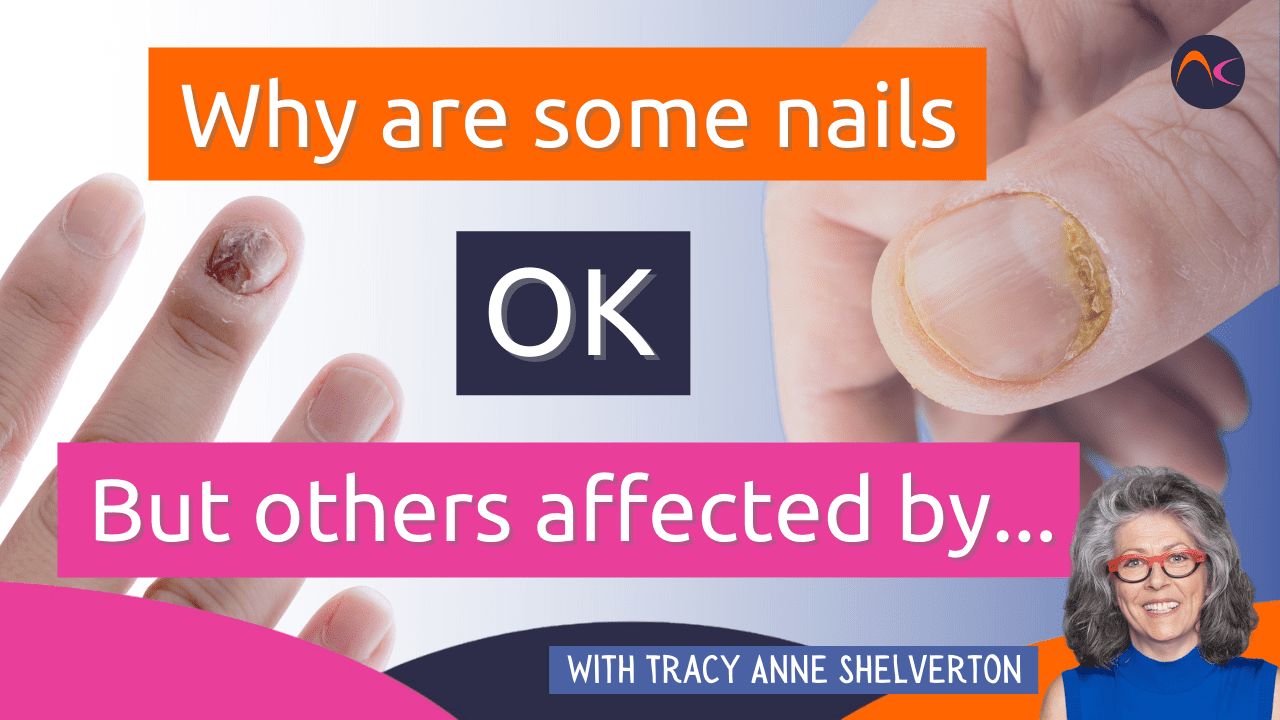Something we don’t usually reflect on, but is totally relevant in the nail studio or pedicure practice, is the number of nail units that we have and the way in which only some or all of them can be affected and/or afflicted by disease or damage and how that may or may not affect all the other nail units.
Tenemos 8 unidades ungueales en los dedos y 2 unidades ungueales en el pulgar
Tenemos 10 unidades de uñas de los pies
That’s 20 nail units in total (I can hear you laughing, hang in here with me – this is important)
Es posible que una o varias de nuestras unidades ungueales se vean afectadas por infecciones, enfermedades o daños, pero sólo las infecciones son transitorias. (traveling from one nail unit to the other)
Las infecciones pueden ser:
- Bacterias
- Hongos
- Viral
Las enfermedades pueden ser:
- Liquen plano
- Alopecia areata
- Psoriasis
- Eczema
Los daños pueden ser:
- Broken nail plate
- Torn nail bed
- Fractured Distal Phalanx
Infections are transient – this means they puede ir de una unidad ungueal a la siguiente o de la mano al pie, de un dedo a los pulmones o incluso cruzar de un ser humano a otro a través del tacto, el aire o la transferencia de fluidos.
A bacterial infection can be highly contagious and spread from one nail unit to the other but tends to be opportunistic, meaning it infects another area if the circumstances are good, maybe the skin is damaged or the nail plate compromised so there is a ‘way in’ for it.
[Dr Kenneth Todar PHD states: “Pseudomonas aeruginosa is an opportunistic pathogen, meaning that it exploits some break in the host defenses to initiate an infection. In fact, Pseudomonas aeruginosa is the epitome of an opportunistic pathogen of humans. The bacterium almost never infects uncompromised tissues, yet no hay casi ningún tejido que no pueda infectar si las defensas del tejido están comprometidas de alguna manera”]
A fungal infection can be contagious if you have open wounds or skin fractures or compromised nail plates on your hands or feet where fungal spores may decide to make their new home.
A viral infection is always infectious and not necessarily opportunistic like bacteria and or fungi but will jump from one place to the next given the chance any way it can.
Las enfermedades de la piel como el liquen plano, el eczema, la psoriasis o la alopecia pueden afectar a cualquiera de las partes de la uña, o a todas ellas. La placa ungueal se verá afectada según la parte de la uña que esté enferma, y es importante recordar que puede estar comprometida cualquiera de las 20 unidades ungueales, o todas ellas, de modo que, por ejemplo, puede haber 4 uñas que presenten picaduras de psoriasis y las otras 6 de las manos no, y 3 uñas de los pies que presenten picaduras de psoriasis y las otras 7 no.
Los daños, ya sean mayores o menores, sólo afectan a los dedos o unidades ungueales que quedan atrapados en el accidente, puedes cerrar 2 dedos en la puerta del coche y que los otros 8 no sufran daños simplemente porque no quedaron atrapados en la puerta del coche o puedes dañar una unidad ungueal con un efile por accidente sin dañar las otras 19.
¿Adónde quiero llegar con esto?
We always have to remember – 20 nail units all function independently from each other – they do not communicate with each other in any way and although they are all similar, each nail unit has its own blood supply and nerve sensors, each nail matrix and or nail unit can become defect anyhow and for any of the above reasons, and plenty of reasons that I haven’t mentioned.
So, the next time a client says ‘Only two of them are like this, the rest of my nails are just fine’ you can explain exactly why that is possible.

